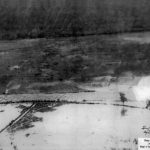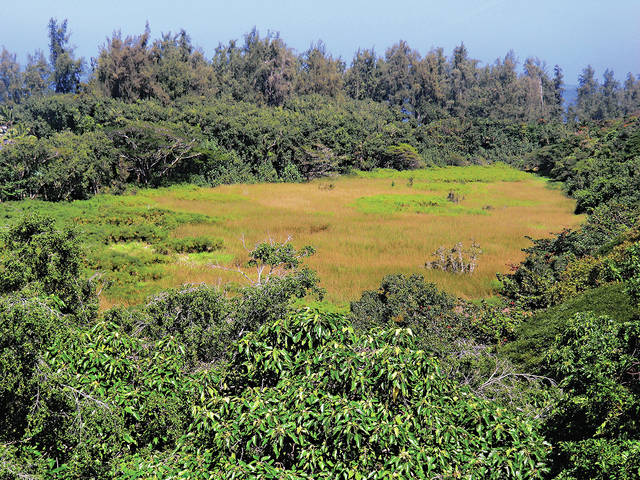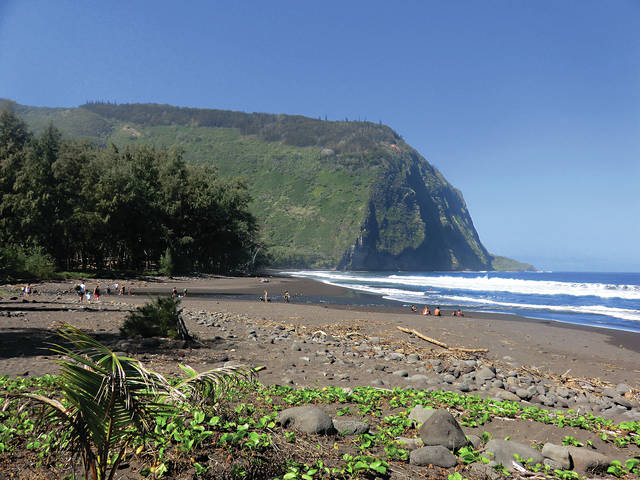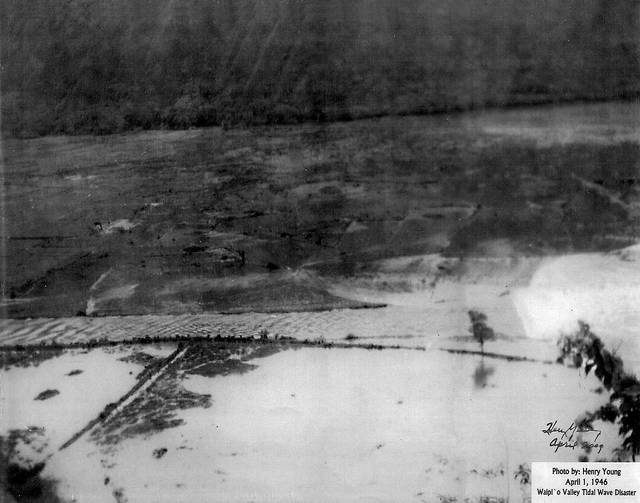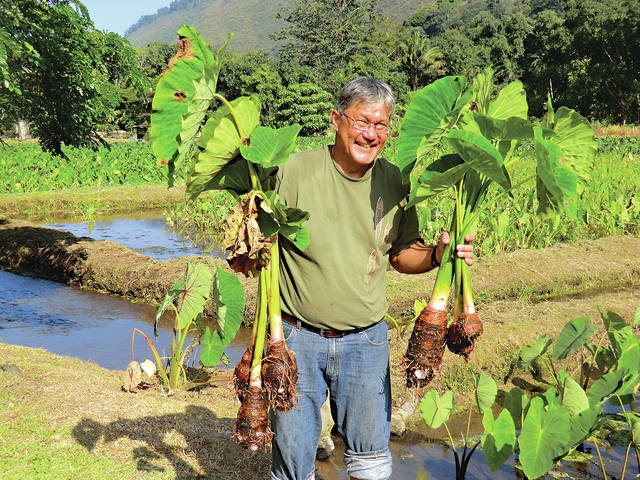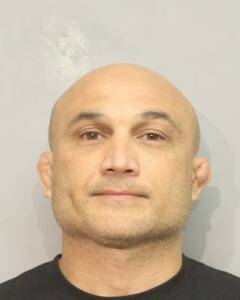Almost 71 years ago to the day, efforts officially will begin to reactivate Lalakea loko i‘a (fishpond) in Waipio Valley that was devastated by the 1946 tsunami that struck the Hawaiian Islands.
At 8 a.m. Friday, the Lalakea Loko Wai Hui, Honokaa community and members of the Kua‘aina Ulu ‘Auamo (KUA, a statewide network of Hawaiian fishpond care practitioners) will gather at the lookout for welcome protocols before descending to the valley floor and gathering at the punawai (spring) of Lalakea fishpond.
At the spring, KUA members will add a rock from their loko i‘a to a kuahu built to commemorate the pond’s rebirth.
It was early morning April Fools’ Day 1946, when one of the worst tsunamis ever to strike the Hawaiian Islands also invaded the quiet, peaceful Waipio Valley on the Hamakua Coast. Hilo and Laupahoehoe were hardest hit. A total of 159 people were killed islandwide. But the tsunami also devastated the Lalakea fishpond (along with a few others on Maui and Oahu) that was used by the people of Waipio for centuries.
It is a traditional Hawaiian fishpond, with a punawai spring-fed pond, a loko i‘a kalo (taro section) primarily fed by the Wailoa River and a loko puuone section that ebbs and flows with the ocean tide. It is primarily a brackish water pond for saltwater fish. Valley residents enjoyed the rich agricultural yield from the valley floor — taro, lotus root and rice — while the fishpond provided a stable and constant abundance of fish.
After the tsunami, the main pond was totally neglected and is overgrown with Egyptian reeds. When it was operational, it was completely walled and subdivided into three distinct sections represented by the six types of Hawaiian fishponds. The reactivation of the fishpond already is underway, with plans to rebuild the paths and wall sections.
“It is with great anticipation that our family and network of dear friends are dedicating themselves to restore the precious waiwai (wealth) of Waipio,” said Kenrock Higa, leader of the group’s restoration efforts. “The Hamakua community cordially invites all people who share a love for na wahi pana o Waipio e Lalakea loko i‘a to join with us for the reactivation ceremony at the fishpond.”
Waipio Valley once was the ancient capital of Hawaii Island and remains today as one of the last defined ahapuaa, said Higa, a retired U.S. Army lieutenant colonel who currently lives on Oahu with his wife and family. In the months ahead, he will move to Hawaii Island to focus on the restoration effort.
“The waiwai of an ahapuaa is its precious water,” Higa said. “Lalakea was so prized in antiquity that many battles raged around it and several invaders tried to destroy the pond because of their disdain for the Waipio based chiefs.
“It is our good fortune to observe the waiwai of Lalakea continue to give life. Therefore, we are dedicating ourselves to the reactivation of the fishpond. It is my firm belief that the fishpond’s reactivation is the key to healing Waipio Valley and will make the valley whole once again.”
Higa said he is returning to the source of his Hawaiian heritage because he feels a strong attraction to his ancestors.
“I feel my ancestors would be happy” about the restoration of the fishpond, he said. “I feel like I’m going home.”


